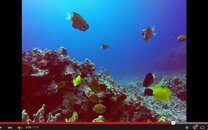My wife and I are amateur gopro users and scuba divers. I have a 3+ black and we dive once or twice a year. I've used my gopro on a few dices and its great having the footage as memory but as you might have guessed, the colors suck. I don't use protune and probably never will since I'm not interested in doing much editing (don't have the time for it). I did a little bit of research and it looks like the backscatter 3.1 for $130 (The 3 filter pack on amazon) is a good system.
Any other recommendations? The cheaper the better, however I don't mind spending the $130 if the quality and result is that much better. We are only 60ft certified and so far we have generally spent most our time in 30-60ft. So do I even need the 3 pack or will the $70 backscatter with only dive filter do most of everything I need. Or maybe there is a different system altogether you guys recommend?
Thanks in advance.
---------- Post added February 20th, 2015 at 04:47 PM ----------
I just wanted to add a couple other clarifications.
1. I will not be using a video light.
2. These will be videos for our memory, not for professional use. So I don't really care too much about color accuracy and more so just something to make the videos as impressive and vibrant as real life, rather than super bland.
Any other recommendations? The cheaper the better, however I don't mind spending the $130 if the quality and result is that much better. We are only 60ft certified and so far we have generally spent most our time in 30-60ft. So do I even need the 3 pack or will the $70 backscatter with only dive filter do most of everything I need. Or maybe there is a different system altogether you guys recommend?
Thanks in advance.
---------- Post added February 20th, 2015 at 04:47 PM ----------
I just wanted to add a couple other clarifications.
1. I will not be using a video light.
2. These will be videos for our memory, not for professional use. So I don't really care too much about color accuracy and more so just something to make the videos as impressive and vibrant as real life, rather than super bland.
Last edited:









